GM's History with Hydrogen Fuel Cells
GM is often overlooked when it comes to hydrogen fuel cell technology; however, they are one of the automakers at the forefront. They were the first automaker to build a hydrogen fuel cell vehicle (HFCV): the Electrovan, built in 1966. They've also been testing modern hydrogen fuel cells in road vehicles since at least 2000 and have been developing hydrogen fuel cell technology for industrial and military uses. One of GM's most striking HFCVs so far is the Colorado ZH2, a four wheel drive, off-road capable HFCV that they have tested with the U.S. military in Moab. GM also entered into a partnership with Honda, building a hydrogen fuel cell manufacturing facility in Brownstown, Michigan.
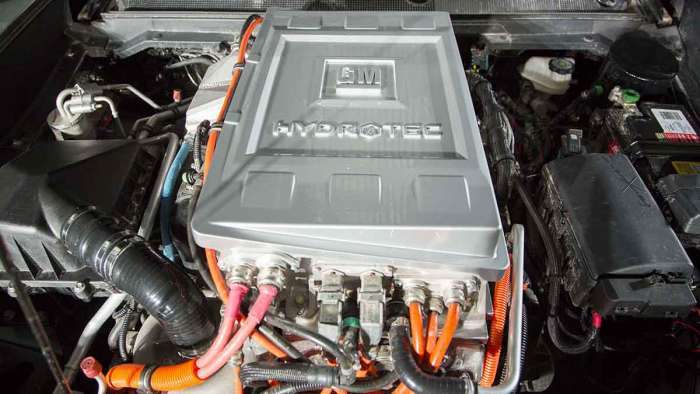 Hydrogen is a Polarizing Topic in the EV Community
Hydrogen is a Polarizing Topic in the EV Community
HFCVs tend to be a polarizing topic, especially among electric vehicle owners and advocates. Battery electric vehicle (BEV) purists push back the hardest against HFCVs, and Tesla's Elon Musk, for example, has referred to HFCVs as a dumb idea on numerous occasions. However, on a technical level, HFCVs are electric. Rather than using electro-chemical energy storage, such as lithium ion batteries, HFCV use hydrogen to store the energy required to propel the vehicle. Proponents of HFCVs have gone so far to refer to them as "fuel cell electric vehicles" (FCEVs) in order to emphasize the electric nature of their powertrain.
While it's true that the hydrogen is "burned" (combined with oxygen) in the fuel cell to produce electrical energy, the vehicle's only tailpipe emission is water. It's also true that hydrogen production is inefficient and often results in the release of greenhouse gases (through the process of steam reformation), but hydrogen can also be produced cleanly by "splitting" water (H2O) using electrolysis powered from renewable energy sources. So HFCVs – much like BEVs – at least have the potential to be 100% clean and renewable.
From a power grid and energy storage perspective, hydrogen production and storage itself could prove highly valuable. Even though producing hydrogen by electrolysis is not efficient, we often find renewable energy production peaking at times when the power is not needed. Wind turbines can be idled on windy days if power demand isn't high enough, and states like California are now dealing with an imbalance in power production versus power demand (referred to as the "duck curve") caused by an increase in photovoltaic solar installations. Having an energy hungry outlet like hydrogen production for all that surplus renewable energy makes a lot of sense. Even with a poor 50% conversion efficiency is better than not generating that renewable energy at all (effectively, a 100% loss).
Some Valid Criticisms
Now, I don't want to simply dismiss all criticisms of HFCV because several are valid (there are serious issues with the current implementation of both HFCVs and the hydrogen fueling infrastructure). I do agree that cost, size, and weight constraints prevent HFCVs from competing effectively against current and upcoming BEVs in the light-duty vehicle segments. A quick comparison between a current HFCV sedan such as the Toyota Mirai and a current BEV sedan such as the Tesla Model 3 demonstrates that the HFCV sedan falls woefully short in important key metrics such as cargo and passenger capacity, performance, and even range. HFCVs enjoy a slight advantage in refueling times on long trips, but those trips represent only a small percentage of the average person's typical driving.
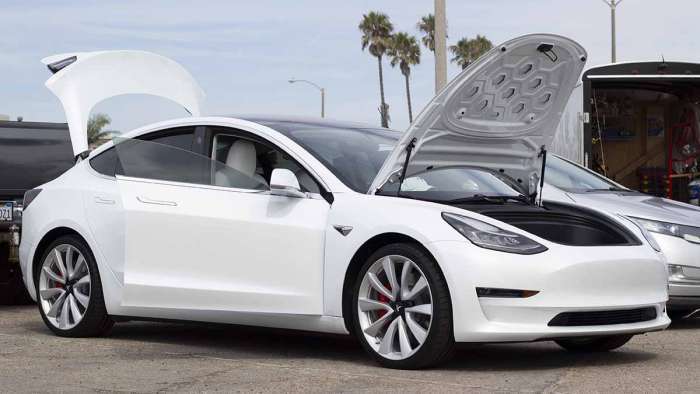
What's worse is that those few minutes someone might save on a long trip are more than offset by the need to regularly go to a public hydrogen fueling station. a HFCV. So far, automakers such as Honda, Hyundai, and Toyota have all been content with making their HFCVs fully dependent on the public hydrogen fueling infrastructure. Given that HFCV are actually electric vehicles with onboard batteries, these automakers (in my opinion) have no excuse for not offering a plug-in option. Even Toyota's chief engineer of the Mirai, Yoshikazu Tanaka, acknowledges that it is better to plug-in and charge a battery than to drive using hydrogen.
There is at least some hope on that front, as Mercedes will be launching their GLC F-CELL with the option of driving a short distance using only the battery, which the owner can plug in and charge directly.
I encourage GM (or any automaker for that matter) to ensure that any HFCV they produce moving forward is able to plug in and provide a minimum of 30 to 40 miles of driving on battery before using the fuel cell stack. Essentially, this is the same concept that GM used with Chevrolet Volt, a car GM referred to as an extended range electric vehicle (EREV). Doing so would make these HFCV less dependent on the hydrogen fueling infrastructure and cheaper to own and operate.
Hydrogen Fuel Cells for Trucks
Where I deviate from BEV purists, however, is that I recognize that the performance, volumetric, and weight constraints of a hydrogen fuel cell system are not as relevant for some vehicle types as they are for small, light-duty vehicles. In particular, hydrogen fuel cells might be appropriate for heavy-duty trucks that are used for heavy loads and towing. Actual work trucks aren't rated by the same performance metrics as small cars. They also tend to have more volume and higher weight capacities than the average light-duty vehicle. Considering the constraints of a hydrogen fuel cell system have a minimal impact on a full-size truck platform and given the expectation that these trucks are able to carry and tow heavy loads for long distances, hydrogen fuel cells might be the preferred method for electrification of heavy-duty trucks.
Some companies, such as Atlis, are claiming that their BEV trucks will have 400 to 500 miles of range and be able to tow upwards of 30,000 lbs. With current battery technology, those claims are, at best, misleading, but they've successfully influenced what people now expect from upcoming BEV trucks. In fact, those claims have even led people to be highly critical of the Bollinger B1, which Bollinger Motors claims will have a 200-mile range on a 120 kWh battery (an efficiency of about 1.7 mi/kWh or just under 600 Wh/mi). In my opinion, however, Bollinger might be the only BEV truck maker who is actually being honest about the range their owners can expect in the real world. In a recent video, The Fast Lane Car (TFL) showed how a Tesla Model X rated at 325 miles of range would struggle to travel 100 miles between charging stops when towing a modest trailer at freeway speeds.
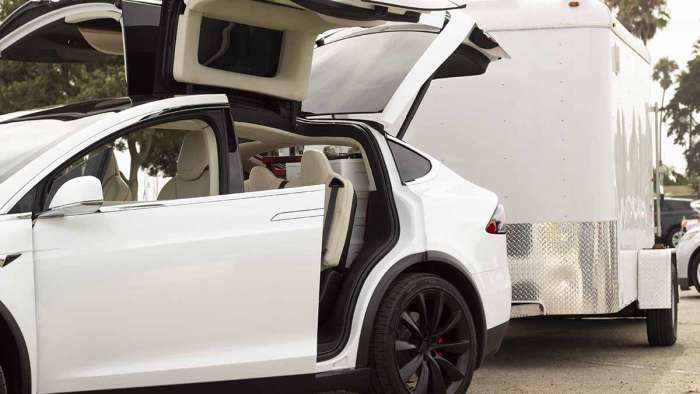 Hydrogen Could Be a Solution for GM's Electric Trucks
Hydrogen Could Be a Solution for GM's Electric Trucks
GM President Mark Reuss was recently interviewed on Bloomberg TV about GM's new heavy-duty truck manufacturing plant in Flint, Michigan. The interview eventually ventured into the topic of battery electric trucks. While Reuss was adamant that GM could build EV trucks, he outlined four key hurdles that would need to be overcome in order for all-electric, heavy-duty trucks to be mainstream. Using Reuss's key hurdles to BEV truck adoption as a framework, we can see how well a heavy-duty HFCV truck would (or would not) overcome them:
Refueling Time
Reuss cited the "plating" issue that occurs when attempting to rapidly charge lithium batteries, and that is a valid concern. Companies such as Atlis claim that their BEV trucks with 500 miles of range will be able to recharge in 15 minutes. Unless Atlis is hiding some groundbreaking technology or is way off in their efficiency estimates, they are claiming charging rates of well over 600 kW. And those are exactly the types of unproven and unsupported charging rates that Reuss was alluding to. Hydrogen, on the other hand, enables even longer ranges with faster refueling times.
Each kilogram of hydrogen represents between 120 and 142 MJ (megajoule) of energy. For argument's sake, let's assume an average of 130 MJ/kg, which translates to roughly 36 kWh of energy. Hydrogen fuel cells are only about 50% efficient at converting hydrogen to electrical energy that can be used by the vehicle, so let's estimate roughly 18 kWh of usable energy per kg. The Toyota Mirai has a hydrogen capacity of 5 kg (or 90 kWh of usable energy by our estimate) and an EPA estimated range of 312 miles. The Hyundai Nexo has 6.3 kg of hydrogen capacity (113 kWh of usable energy) with 380 miles of EPA estimated range.
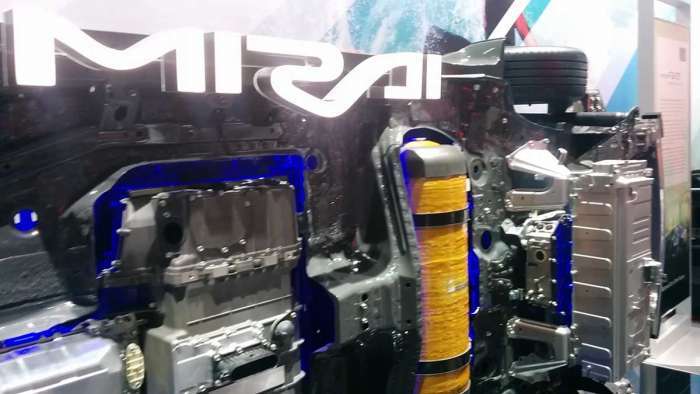
A heavy-duty truck used for long-range hauling would need at least 10 kg (and possibly as much as 20 kg) of hydrogen capacity to replicate the capability of modern internal combustion trucks. That's the equivalent of somewhere between 180 and 360 kWh of usable energy, the higher figure being unheard of even among the most bombastic BEV truck makers. Even with Bollinger's more realistic efficiency estimates of 1.7 mi/kWh, an HFCV truck with 10 to 20 kg of hydrogen capacity would have a range between 300 and 600 miles per fill up. Those are ranges that current internal combustion truck owners can relate to, especially when combined with 5 to 10 minute fueling times. Obviously, towing a trailer would, at a minimum, cut those numbers in half, but again, that's something that current truck owners are already accustomed to.
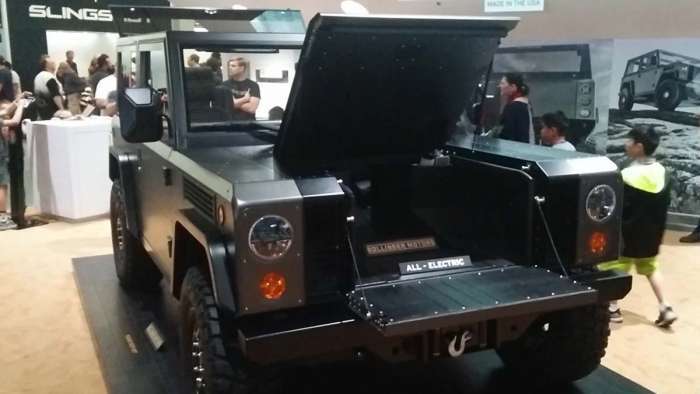
The Hyundai Nexo and Toyota Mirai (113 kWh and 90 kWh equivalent energy respectively) both claim to have refill times of about 5 minutes. That's an equivalent charging rate of between 1 and 1.3 MW (megawatt) or twice as fast as Atlis's outrageous claims of 600+ kW charging rates. So hydrogen would certainly address Reuss's concerns about refueling times.
Widespread Infrastructure
Another major issue that Reuss noted was infrastructure, and this is where hydrogen currently falls short. In the United States, hydrogen fueling stations are located almost exclusively in California, and even then, they don't sufficiently cover the entire state. Most of California’s 50 or so hydrogen fueling stations are clustered around the greater Los Angeles and San Francisco metropolitan areas, and there are only a few hydrogen stations along the interstate corridors. What is more, these fueling stations don't support common hauls to nearby states, such as Arizona, Nevada, and Oregon.
So the number and distribution of those hydrogen fueling stations is nowhere near where it would need to be to support heavy-duty truck usage, even when specifically looking at California. Also, with an estimated cost of nearly $2 million per station, the growth of any hydrogen fueling infrastructure is likely to be very slow. In fact, it really brings us back to the chicken-egg dilemma of who would build public EV charging. The cost of the filling stations cannot be justified until vehicles are on the road; however, no one will buy the vehicles if they do not feel that they have sufficient places to refuel them.
Cost Parity or Less
Reuss is also under the impression that these vehicles would need to be the same price or cheaper than their internal combustion counterparts. In this, I both agree and disagree with Reuss. I understand that when two products are of equal cost, the more familiar product will win out; however, I think that the comparison is being oversimplified. Yes, up-front cost is one metric, but the total cost of ownership is what should be considered, especially when the vehicle will be used for work (Reuss’s target demographic).
Now, the cost of fueling and maintaining an HFCV truck is likely to be similar to the cost for an internal combustion truck, but that is why including the option to recharge the battery at home for 60 to 80 miles of battery-only range is so crucial. As we’ve seen from Chevrolet Volt owners, a majority of miles driven are on battery. An HFCV truck would be no different, and outside of long hauls and family vacations, the cost of owning one of these HFCV trucks would be a fraction of an internal combustion truck that is driven on a daily basis.
The size of the battery could be tricky to manage, however, because it would require a balancing act between cost, energy, power, and weight. Going back to Bollinger's 1.7 mi/kWh estimated efficiency, a battery capable of supporting 60 miles of driving would need to be about 35 kW. Even with current lithium battery prices and technology, that battery would add at least $3,500 to the cost and between 400 and 800 lbs to the weight of the truck. The weight would likely be closer to the 800 lb mark because, in order for the HFCV truck to drive solely on battery power, the battery would need to have sufficient power density.
The outgoing Chevrolet Volt's battery would actually be ideal for this use case. It is only 18.4 kWh, but more importantly it can output well over 100 kW at that size. If GM wanted a quick shortcut for a plug-in HFCV truck, they could package the equivalent of two Chevy Volt battery packs, which would provide sufficient energy and power to drive a heavy duty truck short distances on batteries alone.
High-Value
The final point that Reuss made was that these trucks would need to have functionality similar to what you can currently get in an internal combustion truck. This is where HFCV trucks would shine. Not only over their BEV counterparts but possibly when compared to internal combustion trucks.
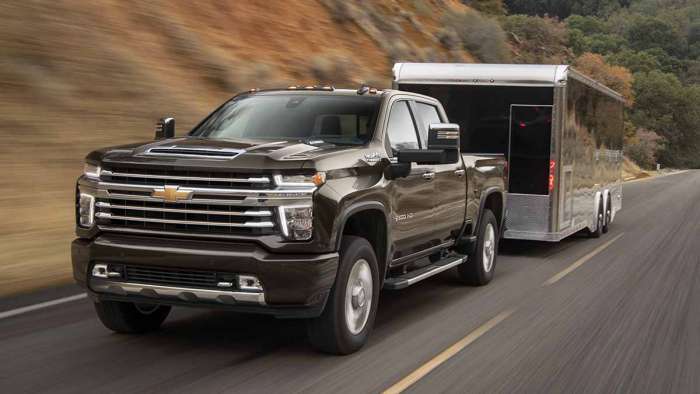
In particular, Reuss called out towing capacity. Electric vehicles have several shortcomings, but towing is not one of them. It’s possible that GM would want to go a similar route as Porsche (who used a two-speed gearbox in their upcoming Taycan). For the purposes of a truck, a 15:1, 20:1, or possibly even 25:1 reduction gear would allow for some very heavy hauling, even with a relatively low-power motor. Also, when it comes to towing, as long as the HFCV’s battery had sufficient capacity, it (like a BEV truck) could use regenerative braking to control momentum, preventing excessive wear on the friction brakes and transmission.
Also, hydrogen fuel cell stacks can be used as onsite generators and even water production. It's common to have to haul a gas generator around, and that could be a thing of the past. Even beyond powering remote work sites, an HFCV with a built-in inverter could also power a home when grid power goes down, or it can power an RV or trailer when camping with the family. As for the hydrogen fuel stack’s water emissions, wouldn't be considered potable, but it could still serve a number of purposes. Suffice to say, those are functions and features that an internal combustion truck simply can’t replicate.
Finally, an additional advantage that HFCVs have when winning over prior internal combustion vehicle owners is the opportunity to scavenge waste heat. As stated earlier, hydrogen fuel cells are only about 50% efficient at converting hydrogen to electrical energy, and the other 50% of that potential energy is released as heat. That represents less waste heat than what is typically produced by internal combustion engines; however, if it is properly managed, it can be used to heat the cabin. In BEVs, that heat must either be generated by resistive heaters or transferred to the cabin using a heat pump, resulting in reduced range due to less energy available to drive the vehicle.
See you next time when I breakdown my Chevy Bolt EV’s battery degradation after 100,000 miles of driving!
About The Author
Eric Way focuses on reporting expert opinion on GM brand electric vehicles at Torque News. Eric is also an instructional designer and technical writer with more than 15 years of writing experience. He also hosts the News Coulomb video blog, which focuses on electric vehicles, charging infrastructure, and renewable energy. Eric is an active member of the EV Advocates of Ventura County, a volunteer organization focused on increasing the widespread adoption of electric vehicles. You can follow Eric on News Coulomb Youtube, on Facebook at @NewsCoulomb as well as on Twitter at @eway1978.





